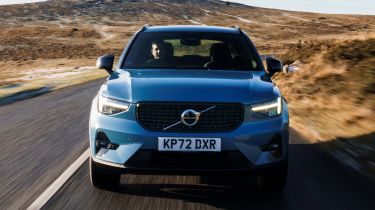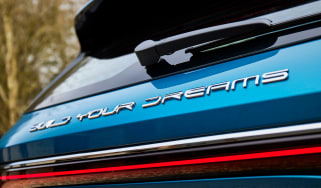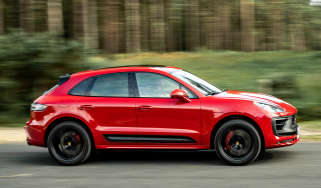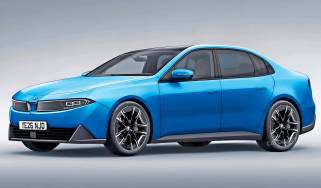Volvo XC40 SUV - MPG, running costs & CO2
There are no longer diesel XC40s, but the mild hybrids are economical if you don’t want the fully electric EX40
The engine options for the Volvo XC40 have changed quite a bit since it was first introduced. Later in its life plug-in hybrid versions joined the range, although these seem to be unavailable at the time of writing. Diesel versions were discontinued in 2020, but the mild-hybrid petrol engines are still fairly economical, and should suit most private buyers. There’s a fully electric version, though its name has changed from Volvo XC40 Recharge to the Volvo EX40, further distinguishing it as a standalone model to avoid confusion.
Volvo XC40 MPG & CO2
Traditional petrol engines have been discontinued, so the entire XC40 range now gets some degree of electrification. It kicks off with mild-hybrid petrol engines, badged B3 and B4 – these use a small electric 48-volt motor to take some of the strain off the engine to improve efficiency, but can’t travel on electric power alone. Despite having different power outputs and performance, both can achieve up to 42.8mpg.
CO2 emissions range between 149g/km and 153g/km depending on the trim level, though these are identical whether you pick the B3 or B4 engine. As a result, they don’t sit in the most attractive Benefit-in-Kind (BiK) tax brackets for company-car drivers – these customers would be better off with the all-electric EX40 thanks to its zero tailpipe emissions putting it into the lowest bracket.
More reviews
The plug-in hybrid T4 and T5 recharge models also sat in low BiK brackets thanks to their low CO2 emissions of between 47-55g/km, but are currently unavailable to order through Volvo’s website. These also boasted impressive economy figures of up to between 117.7-134.6mpg – figures that are only feasible if you keep them charged up regularly. They can also manage up to 28 miles of electric range to a charge.
The electric version of the XC40, now badged the EX40, comes in three variants. The standard entry-level single motor car gets up to 296 miles to a charge from a 69kWh battery, while the Extended Range version’s larger 82kWh battery delivers up to 343 miles.
The Twin Motor variant uses the same battery as the Extended Range, but gets a slightly shorter range as it’s used to power two motors, so it can do up to 332 miles to a charge. These electric models also benefit from free VED (road tax) until 2025.
Insurance groups
Insurance groupings have increased over the years the Volvo XC40 has been on sale. The B3 Core petrol used to sit in group 23, but as of 2024 it starts from group 28 – the B4 models in Plus or Ultra trim sit in the same group despite the extra power and specification. Because the Volvo XC40 Recharge electric model was renamed so recently, it’s yet to get official insurance groups under the EX40 nameplate. For reference, though, the XC40 Recharge sits in groups 35 to 42 so is quite a lot more expensive to insure.
Warranty
Volvo provides a fairly typical three-year/60,000-mile warranty that can be extended if you’re prepared to pay extra. While it matches the Volkswagen Tiguan, it looks a bit stingy next to manufacturers offering longer cover periods for free.
Servicing
It’s possible to spread the cost of servicing by signing up to monthly payments instead of being hit in the pocket at the garage. The aforementioned Care By Volvo package rolls the cost of servicing, insurance and leasing your XC40 into a single monthly payment, although service plans are available separately if you’re not buying or leasing your car through Care by Volvo.
Which Is Best?
Cheapest
- Name2.0 B3P Core 5dr Auto
- Gearbox typeSemi-auto
- RRP£36,310
Most Economical
- Name2.0 B3P Core 5dr Auto
- Gearbox typeSemi-auto
- RRP£36,310
Fastest
- Name2.0 B4P Plus Dark 5dr Auto
- Gearbox typeSemi-auto
- RRP£40,960













